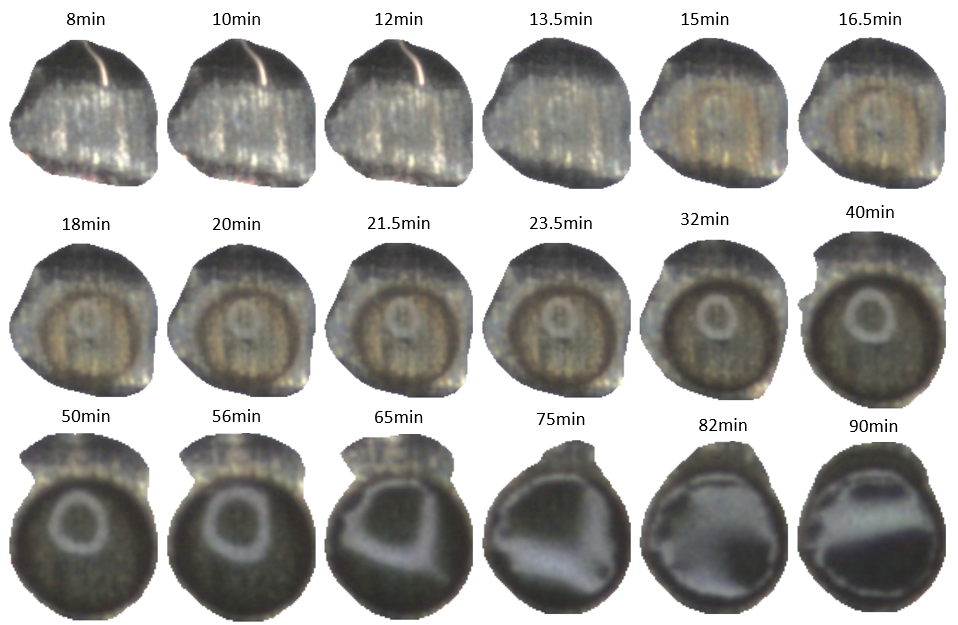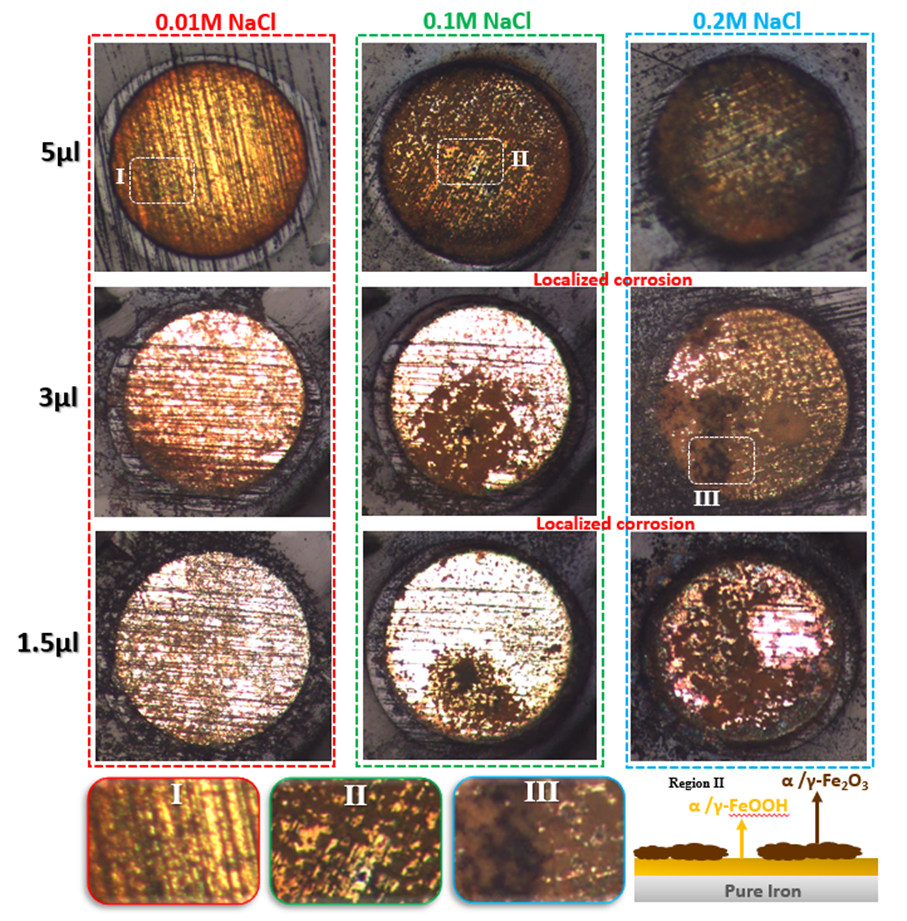Project Description
Key information
Program title: Advanced Measuring and Modelling of Thin-Film Corrosion
Project in the Spotlight: T18016
Funding: M2i-PPSk
Run time: July 2020 – November 2024
Market: Corrosion
Written by M2i Program Manager: Jeroen van Beeck
ThinCorr research project
ThinCorr aimed to improve our understanding of the corrosion resistance of metallic systems under atmospheric conditions. With the project, it becomes easier to select suitable materials for the transport and civil sectors and to validate new material developments and surface preparations. The project consisted of three positions (1 PhD researcher and 2 PostDoc researchers) and focussed on four main scientific goals: 1) investigating and describing the corrosion mechanisms under controlled thin-film electrolyte conditions, 2) monitoring and describing the conditions and processes taking place during accelerated testing, 3) developing an advanced dynamic electrochemical model to describe corrosion processes under thin-film conditions, and 4) studying selected cases provided by industrial partners. The project is now nearing its end-phase, with most researchers having successfully completed their research work packages.
Consortium
The project brings together complementary expertise and state-of-the-art capabilities within the Department of Materials Science and Engineering at the Delft University of Technology and the Electrochemical and Surface Engineering group at the Vrije Universiteit Brussel. From a user side, Tata Steel, Arcelor Mittal, SKF, and Zensor represent the industry.
Advanced measuring and modelling
The project delivered novel and improved experimental setups to measure corrosion, and also developed models to study and describe the corrosion mechanisms of steel alloys under single and multiple-droplets electrolyte conditions . This enables industrial end-users to efficiently steer and improve their material development and selection. Furthermore, the project also provides in-depth understanding the main factors governing the atmospheric corrosion mechanism and the possibility of simulating the corrosion performance of different steel alloys under relevant conditions. Thus, the project resulted in enhanced corrosion monitoring methodologies and experimental set-ups for real-life validation of the remaining corrosion lifetime of metallic materials.
Exemplary results
The experimental work performed in ThinCorr has enabled tracking of individual droplets deposited on a sprayed steel substrate in an atmospheric chamber, see Figure 1(left). The tracking analysis brings to light the exact moments when corrosion product starts to be visible under certain droplets, and thus the analysis provides valuable insight into the initiation of corrosion under varying conditions. Furthermore, a detailed analysis was performed on an individual droplet deposited on a micro-sized three electrode cell. The experiments showed the different mechanisms and corrosion products present on the electrode after the corrosion tests (see Figure 1(right), providing valuable insight into the early-stage onset of corrosion. Finally, a model was developed to study both droplet and thin-film based corrosion numerically, using the data generated in the experiments. Comparison of the model predictions to the experimental results showed a very promising match, see also Figure 2. However, further model development iis required to be fully applicable to industrial cases.
Figure 1 – (left) Tracking electrolyte droplets and the underlying corroding steel after spraying a steel sample; (right) analysis of the corroded electrode in a micro-sized three electrodes cell, reproduced from Rahimi et al. Corrosion Science 235, 112171.
Figure 2 – Comparison between model predictions and experiments for multiple droplets on a steel substrate.
Berend Boelen, Tata Steel, Industrial partner
“For Tata Steel, it is very important to understand how our steels corrode in the conditions seen in practice. Accurate modelling and experimentation is a requirement for this, and thus the ThinCorr project is very interesting to Tata Steel. The approach taken in the project, with both experimental and numerical routes has resulted in very interesting new insights which we can further study to develop novel steels which are less susceptible to corrosion.”
 Yaiza Gonzalez-Garcia, TUD, Project Leader
Yaiza Gonzalez-Garcia, TUD, Project Leader
“With ThinCorr, we have been able to study the corrosion response of steel substrates in the presence of a thin film of electrolyte. By studying both individual and multiple droplets experimentally, we have gained valuable insight into the corrosion mechanisms dominating the process. ThinCorr was a collaboration with the Vrije Universiteit Brussel, who took care of developing a novel numerical model able to describe the corrosion process and predict the performance under more complex conditions. Together, we have increased our understanding of atmospheric corrosion of steels.”
 Keer Zhang, TUD, PhD Researcher
Keer Zhang, TUD, PhD Researcher
“In the ThinCorr program, I am studying the corrosion behaviour of multiple droplets deposited on a steel substrate, under various atmospheric conditions. For this, I created an experimental setup which allows me to monitor the droplets in realtime. By applying advanced imaging analysis techniques I have been able to track the droplets, and the underlying steel, and thus study the corrosion behaviour.”


